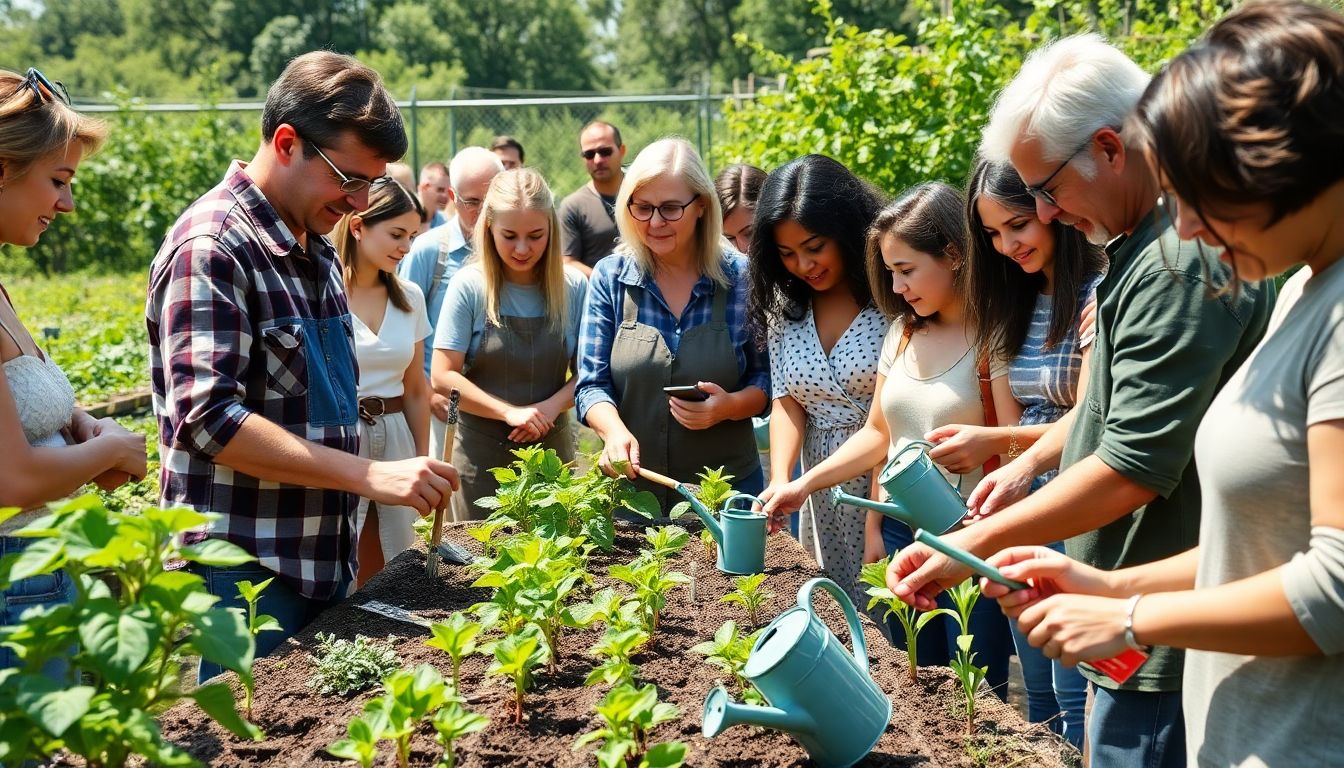Did you know that there is an increasing number of people interested in organic food? The demand has skyrocketed in the past few days. This is not as easy as it seems. Maybe you’d have some nasty bugs getting after your plants. Or maybe your soil isn’t all that great. Well, good thing there is help. The organic gardening tips training portal will show you how to grow fantastic organic gardens. With simple tips and proven tricks, you will achieve success.
Section 1: Learning the Basics of Organic Gardening
This section deals with the basic philosophy behind organic gardening. It acts as a platform before we get into some more advanced things.
Subsection 1.1: What Is Organic All About?
Organic gardening, simply stated, is all about growing food without artificial input. No synthetic fertilizers, no pesticides. There is certifying organizations such as the USDA that provide rules regarding what is organic. By following an organic gardening practice, you are making a choice for better health for yourself and for Mother Earth. Many people believe that organic food tastes good on the tongue. Some think being organic is simply a marketing gimmick, but it is a formal and scientific approach to gardening.
Subsection 1.2: Soil Health: The Key To Success In Organic
Good soil is incredibly important. Soil that is healthy helps plants become strong. You should get it tested to see what is in it. Soil is made of sand, silt, and clay. The percentage of each component would determine how well the water moves through it. It will also determine the amount of nutrients that the soil can hold for the plants.
Subsection 1.3: Composting 101: How To Turn Waste Into Gold For The Garden
Compost is a kind of fertilizer when mixed into the garden. It is the decomposed form of spoiled edible leftover food and garden waste. Composting is quite simple: just divide stuff into greens and browns, and turn it now and then. If your compost smells, add some brown material.
Section 2: Planning Your Organic Garden for Higher Yielding Potential
Here is where we go into the planning process. Wise planning gives one higher returns in the garden. It helps one use various resources more prudently.
Subsection 2.1: Site Selection: Choosing The Site
Choose the right site for your garden. Think of sunlight. Would the plants need ample amount of sunlight? Ensure they can. Now, consider water; can you bring water to the garden without hassle? Ensure soil drainage.
Subsection 2.2: Crop Rotation: A Natural Way To Avoid Pest Invasion And Diseases
Crop rotation is just one more trick. Don’t plant the same thing in the same site every year. Change things around. This prevents pests and diseases. It also makes for good soil.
Subsection 2.3: Companion Planting: Harnessing Good Things About Plant Partners
Some plants like to hang out together. Plant tomatoes with basil for the sake of annoying pests attacking the tomatoes. It is commonly referred to as companion planting: plant buddies looking out for one another.
Mastering Organic Control of Pest and Disease: Section 3
This section is about how to control unwelcome pests and diseases without allowing evil chemicals to invade.
Subsection 3.1: Understanding Common Garden Pests and Diseases
Whom among these insects annoyeth thy plants? Aphids are tiny little insects that suck sap out of a plant. Caterpillars feed on leaves. Powdery mildew looks as if white powder were sprinkled over the leaves. Blights make spots on plants. Finding out what is wrong is the first step towards the cure.
Subsection 3.2: Natural Pest Control Strategies: An Organic Way
Anything you can do to stop pests without using chemical means? Introducing good bugs like ladybugs works-they will feed on the bad bugs. Neem oil will kill pests very well. Row covers will keep the bugs from getting at the plants. In the end, make sure to create an environment in your garden that welcomes good bugs.
Subsection 3.3: Preventing and Treating Diseases: Immunization for the Plants
Preventing diseases is easier than curing them most of the time. Water your plants the right way. Do not wet the leaves. Space the plants for air circulation. Some plants have greater immunity against diseases. If a bad one comes, calculate copper fungicide or baking soda spray.
Section 4: Watering and Feeding Your Organic Garden
This whole chapter discusses watering and feeding the plants while avoiding anything acidic to the environment.
Subsection 4.1: Watering Methods: Giving Beautiful Hydration
Watering can be done in many ways. Drip irrigation waters the plants at the roots. Soaker hoses Work like leaky hoses. The third way is hand watering; check the soil with your finger. Is it dry? Time to water.
Subsection 4.2: Organic Fertilizers: Nourishing Naturally
Fertilizers nourish your plants. Compost tea can be regarded as liquid fertilizer from compost. Fish emulsion is made from fishes. Bone meal is from bones. Each plant needs different nourishment at different times.
Subsection 4.3: Mulching: Retaining Moisture and Suppressing Weeds
Mulch is a covering on top of the soil. It retains moisture. It prevents weeds from growing. It keeps the soil from getting hot and cold. Straw, wood chips, and leaves, all make great mulch materials.
Section 5: Advanced Organic Gardening Techniques
The complex techniques that this section introduces will additionally enhance your yields, prolong growing seasons, and maintain your garden.
Subsection 5.1: Seed Saving: Protecting Heirloom Varieties
Why should one buy seeds when they can save their own? This will save you money. Heirlooms are old seed varieties passed down through generations. Some plants, for example, tomatoes and beans, are rather easy for everyone to save seeds from.
Subsection 5.2: Vertical Gardening: Utilize All Space in the Small Garden
Small space? Go vertical. Trellises let the vines climb up. Stackable planters allow you to grow many plants in one spot. Setting up wall-mounted systems means you have turned over your wall to a garden.
Subsection 5.3: Season Extension: Extending the Growing Season
Want to garden longer? Cold frames are just miniature greenhouses. Row covers are just blankets for your plants. Hoop houses are larger than cold frames. These tricks would allow you to start sooner and finish later.
Conclusion
The organic gardening tips training portal is your gateway into the green world. Learn gardening without using any harsh chemicals. Organic practices benefit both you and the Earth. So, check out the portal. Begin your organic-gardening journey now.


